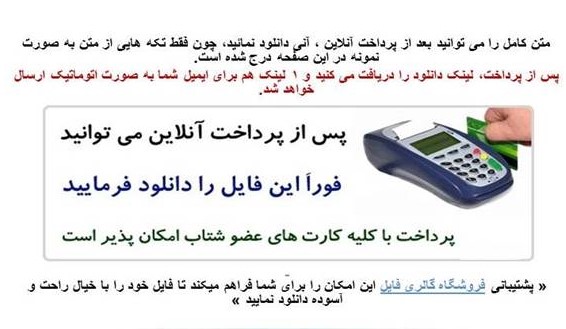لینک دانلود و خرید پایین توضیحات
فرمت فایل word و قابل ویرایش و پرینت
تعداد صفحات: 5
Rules Currently in Effect
Chapter 21. Student Services Subchapter T. Matching Fund Employment Program for Professional Nursing Students
Please note that The Texas Higher Education Coordinating Board makes every effort to ensure that the information published on this Internet site is secure and accurate; however, due to the limitations of Internet security, the rules published here are for information only, and do not represent legal documentation.
This chapter is also available in PDF format.
§21.620 Authority and Purpose
(a) Authority. Authority for this subchapter is provided in the Texas Education Code, Chapter 61, Subchapter L, Financial Aid for Professional Nursing Students and Vocational Nursing Students and Loan Repayment Program for Certain Nurses. These rules establish procedures to administer the subchapter as prescribed in the Texas Education Code, §§61.651 - 61.658.
(b) The purpose of the Matching Fund Employment Program for Professional Nursing Students is to promote the health care and health educational needs of the citizens of Texas.
Source Note: The provisions of this §21.620 adopted to be effective July 3, 1990, 15 TexReg 3575; amended to be effective November 28, 2004, 29 TexReg 10773
§21.621 Definitions
The following words and terms, when used in this subchapter, shall have the following meanings, unless the context clearly indicates otherwise:
(1) Advisory Committee--The Advisory Committee to advise the Board concerning assistance provided to professional nursing students.
(2) Board--The Texas Higher Education Coordinating Board.
(3) Commissioner--The commissioner of higher education, the chief executive officer of the Board.
(4) Cosigner--A person signing a promissory note, other than the loan recipient, who is over 21 years of age and who is gainfully employed full time or otherwise demonstrates financial responsibility. Such a person may be a relative, except a spouse, and may not be a student. He or she may be a representative of the eligible employer. A cosigner is jointly and severally responsible for all promissory notes issued throughout the program and signed by the maker and him or herself.
(5) Employment Program Award--A lump-sum monetary award provided students on a term-by-term basis through the employment program, in exchange for which the student is obligated to work for an employer for one year after completion of his or her professional nursing studies. If the terms of the exchange are violated, and the grievance subcommittee determines it to be appropriate, the award may be treated as a loan, with repayment required of the student and with interest accruing from the date of the award disbursement.
(6) Employment Program--The Professional Nursing Student Matching Fund Employment Program.
(7) Financial Need--The cost of education at an institution of higher education less the expected family contribution and any gift aid for which the student is eligible. The cost of education and family contribution are to be determined in accordance with Board guidelines. The cost of education includes tuition, fees, educational materials and living expenses.
(8) Fund--The Professional Nurses Matching Fund Employment Program Fund administered by the Board.
(9) Grievance Subcommittee--A subcommittee appointed by the Board to review documentation and hear grievances raised through channels outlined in this subchapter and to assess penalties as determined appropriate.
(10) Half-time Student--A person formally admitted to the institution who is enrolled or expected to be enrolled for a half-time course load as determined by the educational program in which the student is enrolled.
(11) Minority--A student whose ethnic or racial group is Black, Hispanic, American Indian or Alaskan Native, or Asian or Pacific Islander.
(12) Nursing Shortage Area--A geographic or practice area within the State of Texas that has an acute shortage of professional nurses.
(13) Professional Nursing Student--A student enrolled in an accredited institution of higher education in Texas in a course of study leading to an initial or an advanced degree in professional nursing.
(14) Program Officer--The Professional Nursing Student Matching Fund Employment Program Officer designated by an eligible institution to represent the program on that campus.
(15) Resident--A resident of the State of Texas as determined by the Board. Nonresident students eligible to pay resident tuition rates are excluded from this program.
(16) Rural Area--A nonmetropolitan county as defined by the United States Census Bureau in its most recent census.

تحقیق درموردمتن انگلیسی مقررات شغلی